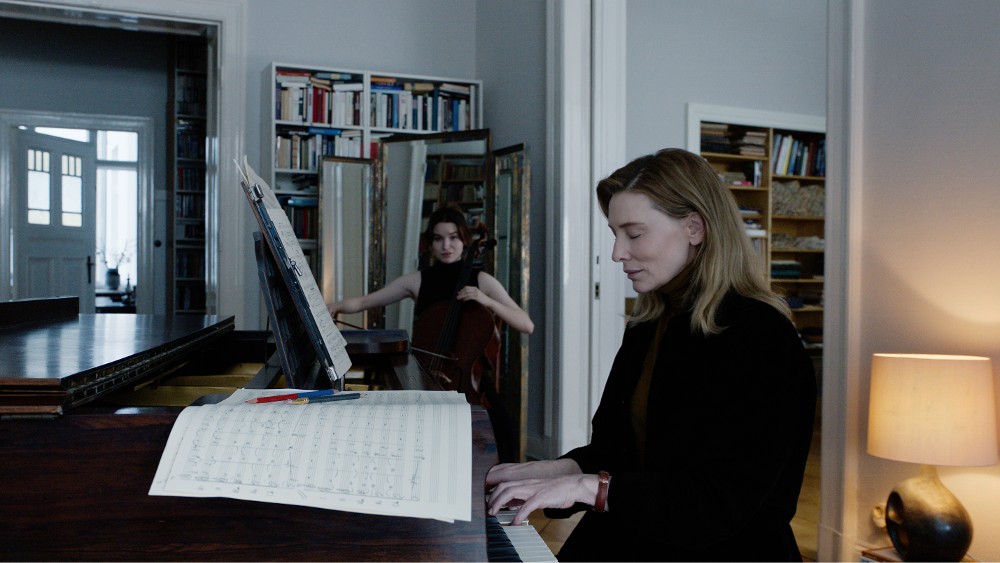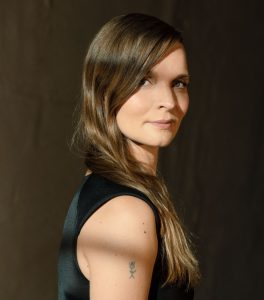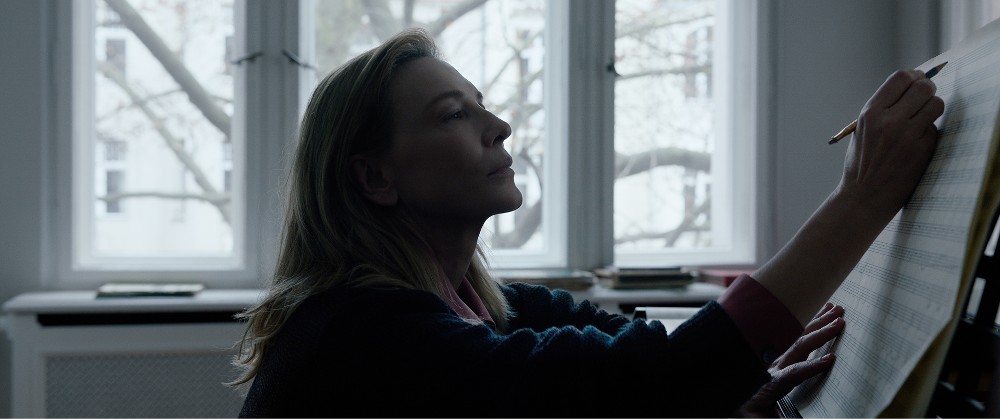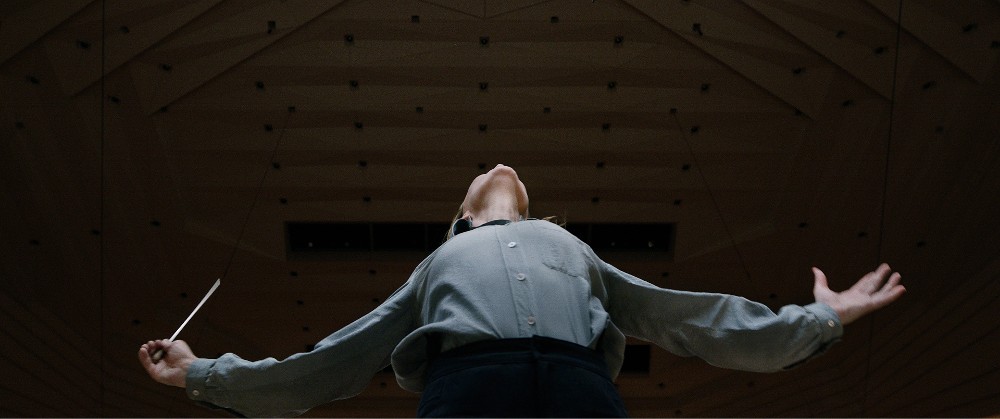
In 2020, Icelandic musician/composer Hildur Guðnadóttir became the first woman to ever win the Oscar for an Original Score for her work on Todd Phillips‘ smash-hit Joker. Guðnadóttir’s triumph is among the kind of glass ceiling-smashing wins that the Academy of Motion Picture Arts and Sciences has been hoping to see more of in recent years.
This year, Guðnadóttir has two fantastic scores in contention, the first of which accompanies Todd Field’s TÁR, which involved a lot more than just her normal composition and arranging, since the film’s star, Cate Blanchett, plays Lydia Tár, a world-class conductor and composer who faces a number of life challenges and career hurdles due to her ethically questionable behavior. Guðnadóttir composed the songs that Lydia writes over the course of the movie, as well as the incidental score that had to blend with classical pieces from Mahler and other famous composers.
Guðnadóttir’s second acclaimed score this year complements Sarah Polley’s Women Talking, and it appears to have the edge between the two among Oscar prognosticators at the moment, though it’s entirely possible that the Icelandic composer could land two nominations. (In fact, if you remember our feature from March about our most anticipated movies of the year from a below-the-line standpoint, we included TÁR’s score.)
Below the Line spoke with Guðnadóttir on Zoom a few weeks back as TÁR was about to premiere at the New York Film Festival, and following its World Premiere at the Venice Film Festival, where Blanchett won the first of what will surely be many awards this season, and the composer’s latest effort was unveiled to rapturous reviews.

Below the Line: I know you’ve been making music for many years, releasing a few solo records, and playing cello with various rock bands. How did the transition into composing for film and television happen? Was it pretty organic for you?
Hildur Guðnadóttir: It was very natural, actually, because I’ve been composing since I was quite young — sometime in my childhood, which was also kind of natural because music was always around. Everyone’s a musician in my family. Writing music seemed like a natural thing to do, so I started writing music very early, and then, in the beginning, for the bands that I was playing with — kind of pop/rock/indie bands– and then I would learn experimental music. I started working in theater for quite a bit, then radio, so theater was kind of my first entry into writing music with a specific story in mind, working as a servant of a story, musically. I started doing that in the early 2000s. It kind of naturally just went into film from there. Film was just one of the mediums that I was curious about, so it was a natural progression.
BTL You worked a lot with the late Jóhann Jóhannsson, who sadly passed away a few years ago. I think you played on some of his scores, like Sicario, and then went on to compose its sequel. Was he helpful in getting you further inside the world of film?
Guðnadóttir: We worked together, pretty much, on everything we did from 2003 onwards, until the very last projects he did. Our collaborations were very much like an open dialogue between friends, really, and we both worked in many different mediums. Like I said, film was also just one of the mediums that he worked in. I definitely worked with him on probably most of his scores, actually. So naturally, it was just one of the things we did, and then film, for both of us, just started taking more and more time.
BTL: TÁR is a very music-based film, so how and when did Todd reach out to you? He hasn’t made a movie in some time, so it must have been a surprise to hear from him. I’m just curious how he approached you about it…
Guðnadóttir: He just got in touch. I reckon that he knew that he would have to have a very strong dialogue with the composer of the film, because as you say, the film is all about the process of making music, so it’s not just about listening to the final result of a piece. It’s diving into what it is to rehearse music, what it is to compose music, and how to approach that from a psychological aspect, just diving into the nuts and bolts of what it is to make or to perform music. I guess I have a bit of a reputation now [for] being someone [who’s] willing to take a long time with a project, and I think he also just liked my music and thought it was a good fit for the project. I was, I think, the second person to come into the project after Cate.

BTL: Ah, OK. I’d been curious if you had gotten involved early on, long before filming…
Guðnadóttir: My role in the film was kind of threefold. I got involved, basically, from the early script stages, and Todd shot in Berlin, where I live, so I was able to meet him a lot, and we were able to spend a lot of time diving into the whole script.
From the very beginning, when he was just scouting locations, we pretty much tempo-mapped the whole film. We set a BPM [beats per minute] for some of the main characters, the tempo that they walked in, the tempo that they were operating in. We were setting the whole psychological turbulence that this character goes through, which has a lot to do with musical aspirations and not being in the place that she [the character] wanted to be.
We just had a lot of conversations about, musically, what the character was, and therefore, also psychologically. As we see, she goes through quite some turbulence in her life, and that has a lot to do with her inability to nurture her path in music. She actually really wants to be nurturing. She’s not really fulfilling that path that she, in her heart of hearts, really wants to be doing. Therefore, it’s not really having the best of times with a path that she’s most known for, and the path that takes up most of her time. We had a lot of discussions about all of these things, so that was kind of my first role.
And then my second role was to write the music that she was writing in the film, so that’s all written by me. In the film, we basically just observe her writing, so we never hear the final result of what she’s actually writing in the film, but I finished writing the music, nonetheless, and I recorded that. Also, in the film, she’s working on a release for Deutsche Grammophon. In our universe, I actually finished her music, and the record actually does come out on DG. In our reality, we get to see the record.
And then my third role was to write the actual score in the film, so it was quite a large job that I had.
BTL: Do you ever conduct the orchestra in the recording sessions for your scores? I was curious whether you had some insight into that aspect of Lydia Tár’s work.
Guðnadóttir: No, no, I haven’t really. I’m a bit shy to conduct, myself. [laughs]
BTL: Fair enough. You mentioned the film’s tempo earlier, and the film has this really interesting passage of time, so it’s hard to determine whether it’s taking place over the course of a month or three months. Did Todd talk with you about how music would add to or affect that?
Guðnadóttir: Timing is super-important in the film, and I think the tempo of the characters, the tempo of the film, the tempo of the narrative, [are some] of the things that [are] really interesting about it. It’s really quite a slow pace. It’s rather kind of laid-back, but that also has to do with the two sides that are conflicting within [Lydia].
She’s larger than life and tough, conducting these large pieces, but she actually wants to be going slower. She’s being pulled towards something that holds her back, that drags her tempo down a bit. That’s something that’s really interesting about the film, and also how Todd tried to… when you watch it, you’re kind of on the edge of your seat, [and] you’re just like, “What is going on?” but at the same time, nothing is really going on. [laughs]
It’s very interesting in that it’s not like a thriller that is fast-paced — [Todd] really manages just to draw it out, but still keep it very exciting at the same time. I think that’s the brilliance of this, just the tempo.

BTL: How is it, as a composer, to write a score, and music, that has you competing, in a sense, with Mahler and other well-known classical music? Your music has to fit in and not conflict with those pieces, so how do you work with that?
Guðnadóttir: It was really clear that the music in the film — the orchestral music that she’s rehearsing, that’s her day-to-day life. That’s the normal setting, so the score couldn’t really live in that world, because [of] how the narrative of the story is. It just wouldn’t make any sense for the storyline, basically. The score really had to live almost in a parallel universe, so this is the day-to-day, and the score is almost in this subconscious, almost ghostly realm, because a lot of the film also deals with these events that you’re not really sure what they are, what they mean, or if it’s actual reality or her imagination. These are questions that are not necessarily answered, but they keep us on the toes of this eerie feeling. The score really had to live in that realm, so I had to bring us to this place of almost a subconscious, otherworldly area.
Basically, how we did that was, the music that I wrote is almost inaudible to the viewer. There’s a lot of music in the film, but the audience will probably perceive it as not really having a score. The score is almost [as] if there’s a ghost in the room. [You] can’t see [it] but you can feel that something is off, so it creeps into your skin without you even noticing. That was the tricky part, just finding that sweet spot of where the score [can] really serve the story without taking away from the day-to-day practice space.
BTL: I read a quote from Todd about your work, saying that it was “subtle and unobtrusive for a reason.” When you were talking about writing the music that Lydia is writing, I have to imagine that’s why he hired you, so that the two things would blend so well.
Guðnadóttir: Yeah, exactly, because when you’re writing the music her characters is writing, it’s not just the music itself. It’s not just writing music and here’s the finished [music] and just throw it to picture. It was really part of the character build-up, and it was a part of forming what her character would be in the film. It was a real privilege to do that.
Obviously, I would say this, because music is all I do [laughs] — so I really live in this world of the music process, and I find it so interesting because it’s such a fragile process. I guess the creative practices are similar, but it’s the practice of writing and performing the music I think is just so fascinating, because all of what you’re going through, physically and emotionally, will inevitably come into the music that you create, and just how you approach that and how you go about the process of writing or practicing, the process of performing and the process of finding a connection to the audience, I find that process almost more fascinating than the music itself.
It was really such a privilege to work on a project, also, obviously, with such phenomenal artists as Todd and Cate. They’re so incredibly open and curious, and just so unafraid of just diving straight into the deep end of all these questions. It was just a real treat for me to get to work in that way because it’s very interesting, I think.
BTL: You mentioned that Todd shot the film in Berlin, where you live, so were you able to spend more time on the set of this movie than you normally would?
Guðnadóttir: I’d both meet up with Todd personally, and then I’d meet up with them both — Todd, and Cate — and just have chats about the whole process [and about] how the music that was written. And also, on set — I was able to come to set a few times, but probably less than I would [have] if it had been normal times, and not COVID times. There were obviously a lot of restrictions on set because there are so many people involved anyway, so we kept it to a minimum. But yeah, it was great to get to be a part of that.
BTL: You also scored Sarah Polley’s Women Talking, which is another beautiful score. Both of those movies have a ton of dialogue that your music needs to work around. Have you had a chance to see either of those movies with an audience yet?
Guðnadóttir: No, actually not. Sadly, I haven’t been able to, because there [have] only been two screenings so far with an audience. I’ve been doing a bit of a back-and-forth, so I haven’t [yet], but I hear from the filmmakers of both films that the audience response has been very strong for both films.
TÁR is now playing nationwide in theaters. Women Talking will open in limited release on Dec. 2, but you can already read J. Don Birnam’s review, in which he praises Guðnadóttir’s score. The film’s soundtrack, which mixes Guðnadóttir’s composed score with other classical pieces, is also available via Deutsche Grammophon and on Spotify.





